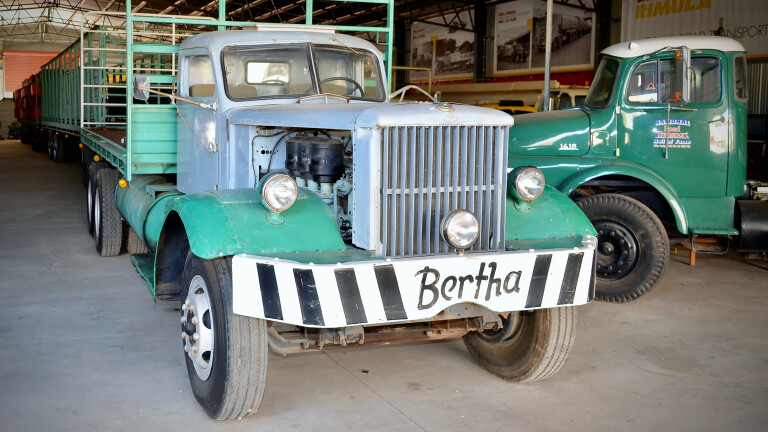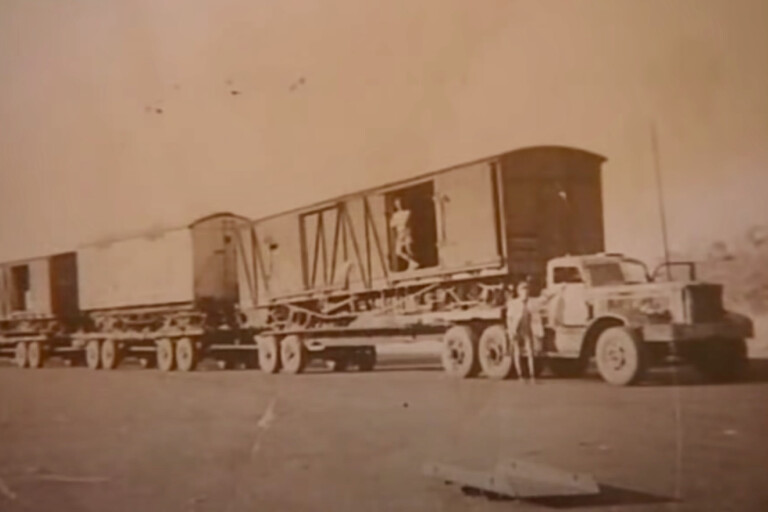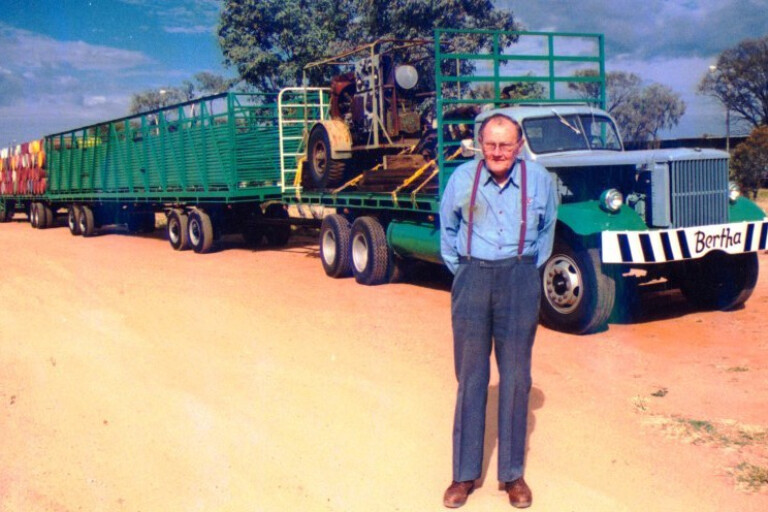
There are few images as quintessentially Australian as the sight of a road train barrelling down a dusty highway in the Red Centre.
While many experimented with early prototypes of road trains – in many cases resembling actual trains by using steam engines – arguably the first successful example was created by Australian bush mechanic Kurt Johannsen in the years following World War II.
Johannsen was born on January 11, 1915, to a Danish father and German mother, and spent his life living throughout the Northern Territory.
He acquired his first driving license at 11 when living in Deep Well, around 30 kilometres south of Alice Springs, and won the government contract for sanitary and garbage services there when he turned 15, by virtue of owning his own truck.
"From the age of 15 onwards, it was all work and I became another breadwinner in the family,” Johannsen wrote in his memoir A Son of 'The Red Centre'.

In his early 20s, while using a Dodge 4 for his monthly mail run – with a crate on the back for transporting rams, essentially making one of the first utes – Johannsen created his first truck, the ‘Bitzer Mulga Express’.
Made from “bits and pieces from various vehicles,” the machine was much larger than the Dodge, and was able to carry large loads while handling the outback tracks, as well as driving off-road through mulga bushes.
Further iterations of the Bitza ended with the Mulga Express III, which was able to haul up to 22 tonnes – a significant capacity for the time.
After the war, Johannsen was transporting cattle and race horses, when a property owner asked him why he didn’t build a truck capable of transporting 100 head of cattle at a time.
"I told him I already had plans made in my mind for building a road train with self-tracking trailers for negotiating bush tracks, but I didn't have the money to buy all the equipment, which would probably cost about £10,000 pounds just for starters.”

The property owner offered Johannsen a £2000 interest-free loan, which he used to buy 23 surplus army gun trailers, using the wheels and axles to build bogies for the trailers.
"I think the idea of the self-tracking trailers for my road trains, which I built after World War II, originated in my imagination when I was about 10 years old,” Johannsen recalled in interviews compiled by the Australian Stockman's Hall of Fame.
“I loved to make all sorts of weird contraptions out of tin lids, kerosene boxes and other bits and pieces and hooked my models together with two, three, and sometimes four trailers with wire towbars around bent nails. I pulled them around with a piece of string or a stick.
“I also made up a wind-driven prime mover using a 15-inch fan with 12 blades, cut from a piece of galvanised iron.”
After finding more money to purchase a Diamond T 980 truck, also from army surplus, Johannsen built three 13-metre trailers, specifically designed to follow the tracks of the prime mover.

The total length of ‘Bertha’ was 54 metres, and was able to navigate the “narrow, unmade, winding, sandy bush tracks” of the Northern Territory with 100 head of fully-grown cattle on board. He eventually grew the fleet to three prime movers and nine trailers.
Kurt Johannsen died shortly after his 87th birthday on January 23, 2002 – 20 years ago today – but his contribution to the Australian outback remains.
Bertha has been restored and is on display at the National Road Transport Hall of Fame in Alice Springs, and you can see an interview with Johannsen on Jeremy Clarkson’s Motorworld TV show on YouTube.

COMMENTS